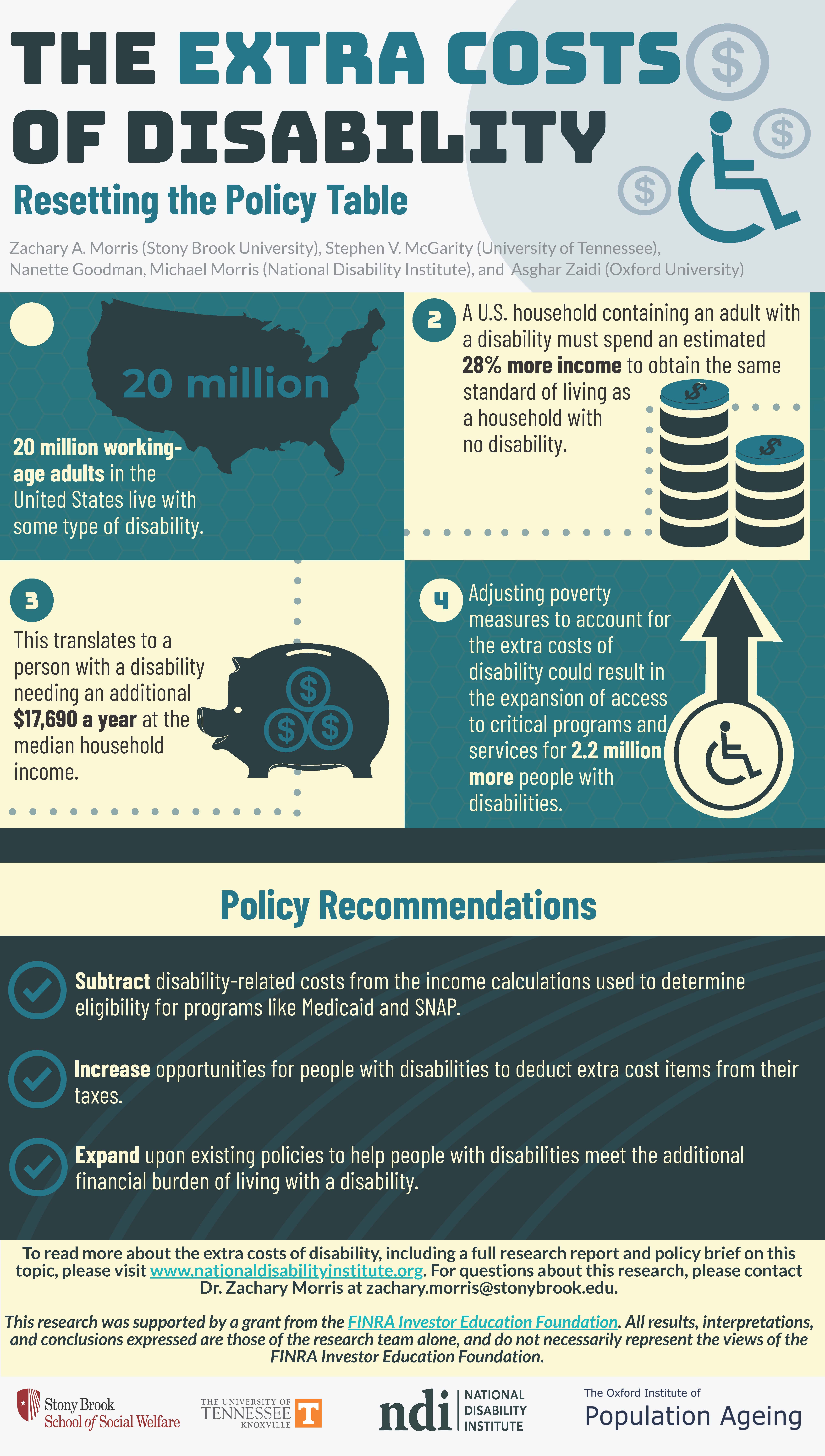By Codi Darnell
November 2, 2021
The monthly budget – while I love a good spreadsheet (seriously, I’m a bit of a nerd), this one is not it. If my computer was an attic, my Monthly Budget spreadsheet would be loose in the back of a binder, the three holes ripped open long ago, and that binder would be in a box in the corner covered by a layer of dust and toys nobody plays with anymore. On my actual computer, I really don’t know where the file is stored and I search for it by title every time I go looking for it.

But it’s always there, breaking down line by line where the money comes from and where it goes. From groceries and clothing to car expenses and Netflix, every penny has a place. Many family budgets look similar: the necessary bills and expenses, the extras and, hopefully, a little left to go into savings. But for someone with a disability or a chronic condition, there are a few different budget items to account for, and they can get pricey.
According to the National Disability Institute, for a household in the United States that includes an adult with a disability, 28% more income is required to obtain the same standard of living as a comparable household where there is no adult with a disability. For a family with a median level income, that translates to requiring approximately $17,690 more a year.
Why? Because symptoms need to be managed by medication or therapy. Because sometimes outside help is required to provide care. Because safety measures need to be taken. Because even the most basic and innate tasks can require equipment and supplies. And all of it costs money.
 Having a disability is not a hobby someone chooses to explore. It is not something you have the option to make room for in the budget. Some people have health insurance that covers most large medically-necessary expenses, but that kind of health insurance is a luxury not everyone has access to. And beyond what’s deemed medically necessary, there are expenses that greatly benefit a person’s life that are out of reach solely because of cost.
Having a disability is not a hobby someone chooses to explore. It is not something you have the option to make room for in the budget. Some people have health insurance that covers most large medically-necessary expenses, but that kind of health insurance is a luxury not everyone has access to. And beyond what’s deemed medically necessary, there are expenses that greatly benefit a person’s life that are out of reach solely because of cost.
The expenses that come with a disability vary widely depending on the person and the diagnosis. But for many of us, the running total is a hard number to comprehend. Between mobility aids and vehicle modifications, medications and therapies, self-care and the need for a caregiver, our budgets have a few too many compulsory lines in them. I can’t list every single one, but hopefully this brief overview can give you an idea.
Mobility
Personal mobility aids can range in price from $30 for the simplest of walkers to over $50,000 for a power wheelchair. Have stairs in your home you need to navigate? A stair lift will cost you over $10,000.
But if you want to venture further from home and require a vehicle, take the purchase price and add anywhere from $1,500 to $15,000 (or more depending on the modifications required).
Pain/Symptom Management Therapies
When it comes to pain and symptom management, there are many therapies beyond medication that people utilize. Physiotherapy, massage, acupuncture, counselling, naturopathy and more. Many see great benefits to their physical and mental health while taking advantage of these services. However, one appointment can cost anywhere from $80 to hundreds of dollars. Even one of those appointments a month can put a big dent in your budget.
Medication
Everyone’s medication regimen is unique. What benefits one person with multiple sclerosis or Alzheimer’s disease might not work for the next. Insurance and government programs may cover some or all of the cost, but sometimes they cover nothing. In that case, the individual is left to decide if they can foot the bill and, if they can, does the benefit of the medication outweigh the hit to their bank account.

Self-care
What if someone told you it would cost you upwards of $1,000 every month, just to pee? That can be the reality if you have a disability that effects your bladder, such as a spinal cord injury. It is literally like flushing money down the toilet. Add on the cost of the supplies required for bowel care and bathing and you’re trading date night money for catheters and laxatives.
Safety
For someone with a physical disability, things like grab bars and lift equipment can be necessary. Shower chairs are needed if someone struggles or is unable to stand. For someone with Alzheimer’s disease, you will have to think about getting extra locks and alarms on the doors, as well as identification bracelets.
Caregiving
Not only is it difficult to find proper and reliable care, but it is also expensive. The cost, of course, depends on the level of care required, but Lisa Marshall from Oh Hello Alzheimer’s says that to secure care for an Alzheimer’s disease patient, it isn’t unreasonable to plan to spend $10,000 to $20,000 every month. I’m not sure I know anyone who could sustain that type of cost long term.
 Getting Active
Getting Active
Beyond the cost of equipment, supplies, and therapies that are medically necessary for different conditions, there are the extras – the things that help people to be active in sports or to get outside and explore nature. Adapted sports equipment and wheelchair add-ons that allow you to tackle more rugged terrain come with price tags of thousands of dollars, sometimes tens of thousands of dollars. It makes it incredibly difficult for people to take advantage of the innovative technology out in the world that would allow them to expand their realities.
No matter what the expense, every item in a budget that exists solely because of someone’s disability is an expense above and beyond what is deemed a common household cost. These are purchases that help maintain the necessities of life, health, and overall well-being of people with disabilities. And the unfortunate truth is, many people can’t make room in the budget for it all. So, I’ll leave you with this question: if you were disabled tomorrow, would you be able to afford the cost of disability?
